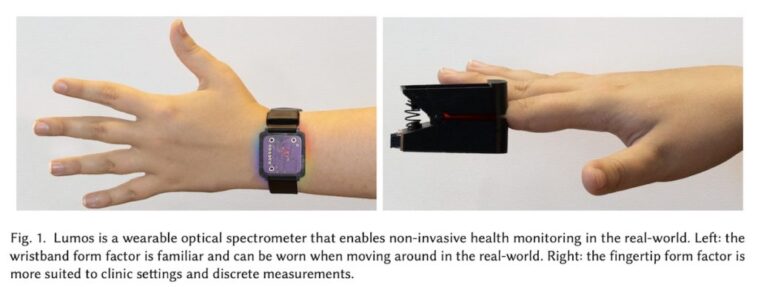
Spectroscopy is a field of study that utilizes the measurement of electromagnetic radiation (often visible light) as it reflects off of or passes through a substance. It can, for instance, help researchers determine the composition of a material, as that composition influences how the material reflects light. Spectroscopy is also used in medicine, but traditionally requires that patients visit a lab. To enable long-term spectroscopic analysis, a team of engineers built a wearable spectroscopy sensor called Lumos.
Lumos comes in two forms: a smartwatch-like wearable wristband and a fingertip model that resembles the pulse oximeters that nurses put on your finger when you go in for a checkup. The latter is meant for use in doctor’s offices and labs, but the former was designed for patients to wear as they go about their daily lives. It would continue to collect spectroscopic data as they do, which could provide valuable insight. Such long-term data collection would help physicians observe how conditions progress or to see conditions that don’t present consistently.

The engineers chose an A7341 spectral sensor for Lumos because it is compact, but still has a large sensing range. An Arduino Nano 33 IoT development board provides power to the A7341, receives the data from the A7341 through an I2C connection, and then sends the data to a base station via WiFi. Power comes from a 400mAh lithium-ion battery, which lasts for around five hours before it needs recharging. That’s five hours of spectroscopic data to analyze — far more than can be gathered using traditional in-lab instruments.
Image credit: Watson and Kendel et al.
The post Lumos finally enables wearable spectroscopy research appeared first on Arduino Blog.
Website: LINK


